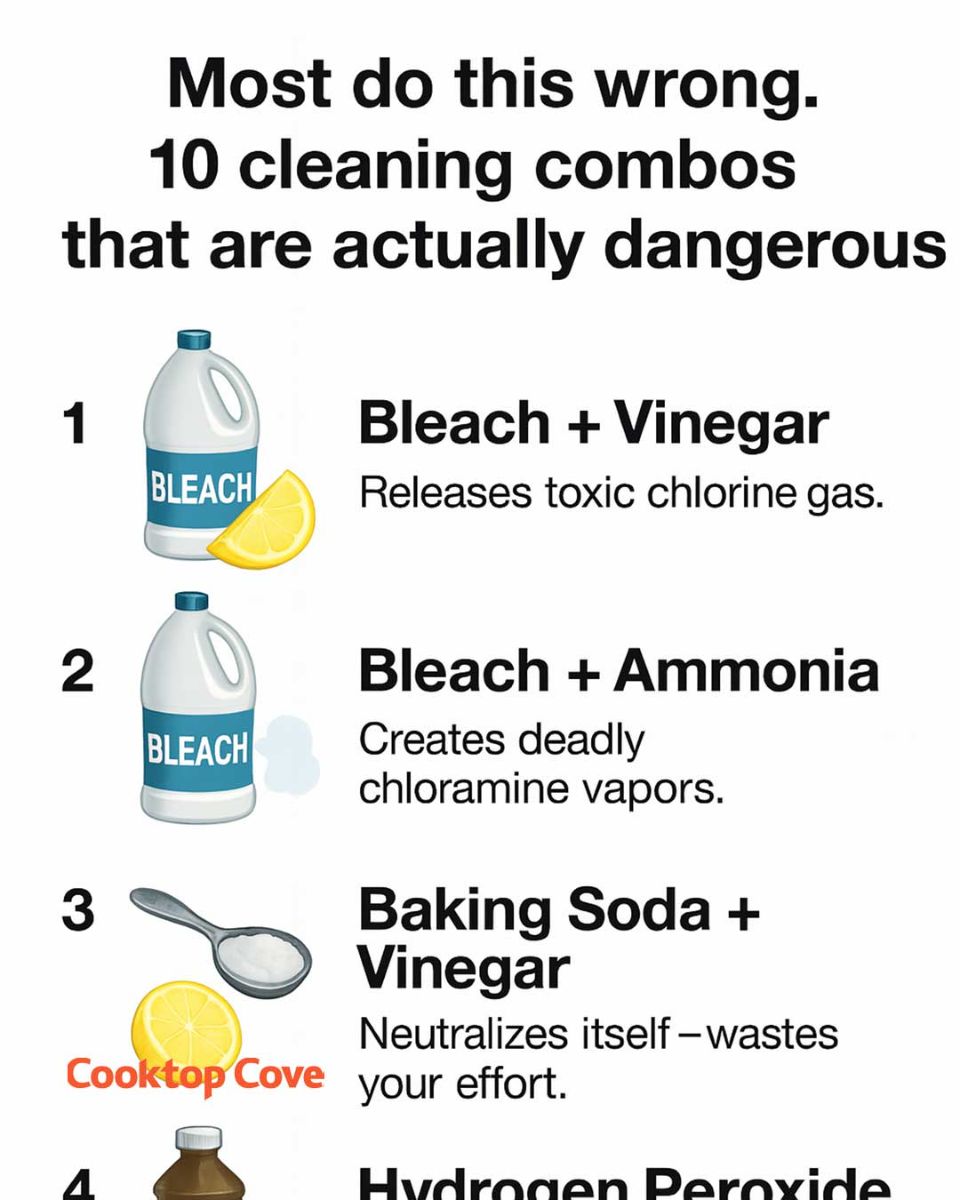Cleaning our homes is a routine task that many of us undertake without much thought. We often reach for a variety of cleaning products, sometimes mixing them in the hope of achieving better results. However, what many people don’t realize is that certain combinations of cleaning agents can be not only ineffective but also downright dangerous. Understanding the chemistry behind these products is crucial to ensuring safety and efficacy in our cleaning routines.
In this article, we will explore ten common cleaning combinations that people often get wrong. These combinations can lead to hazardous chemical reactions, produce toxic fumes, or simply cancel each other out, rendering them ineffective. By being aware of these dangerous pairings, you can protect yourself and your household from potential harm.
1. Bleach and Vinegar: A Toxic Combination
Mixing bleach with vinegar might seem like a powerful cleaning solution, but it’s actually a recipe for disaster. When these two substances are combined, they produce chlorine gas, a toxic compound that can cause respiratory issues, coughing, and burning sensations in the eyes and throat. Even small amounts of chlorine gas can be harmful, so it’s crucial to avoid this combination at all costs. If you’re looking to disinfect surfaces, it’s best to use bleach on its own, following the manufacturer’s instructions for proper dilution and application.
2. Bleach and Ammonia: A Recipe for Danger
Bleach and ammonia are two common household cleaners that should never be mixed. When combined, they produce chloramine vapors, which are highly irritating to the respiratory tract and can lead to serious health issues. Symptoms of exposure include coughing, shortness of breath, chest pain, and even pneumonia in severe cases. If you need to use both products, make sure to use them separately and allow one to dry completely before applying the other.
3. Baking Soda and Vinegar: The Ineffective Duo
Baking soda and vinegar are often touted as a natural cleaning powerhouse, but when mixed together, they actually neutralize each other. Baking soda is a base, while vinegar is an acid, and when combined, they produce water and carbon dioxide gas. This reaction might be fun to watch, but it doesn’t provide any cleaning power. Instead, use baking soda as a gentle abrasive cleaner and vinegar as a disinfectant, but apply them separately for the best results.
4. Hydrogen Peroxide and Vinegar: Corrosive Concerns
While both hydrogen peroxide and vinegar are effective cleaning agents on their own, mixing them creates peracetic acid, a corrosive substance that can irritate the skin, eyes, and respiratory system. Peracetic acid is often used in industrial settings for its disinfectant properties, but it should not be used in the home without proper safety precautions. To avoid creating this harmful compound, use hydrogen peroxide and vinegar separately, allowing time for one to dry before applying the other.
5. Rubbing Alcohol and Bleach: Hazardous Fumes
Combining rubbing alcohol and bleach results in the formation of chloroform, a chemical that can cause dizziness, nausea, and even damage to the liver and kidneys with prolonged exposure. Chloroform was once used as an anesthetic, but its potential for harm makes it unsuitable for household use. To ensure your safety, never mix these two products. Use bleach for disinfecting surfaces and rubbing alcohol for sanitizing, but keep them separate.
6. Vinegar and Castile Soap: A Counterproductive Mix
Vinegar and Castile soap are both popular natural cleaning agents, but they don’t work well together. When mixed, the acidic vinegar causes the soap to unsaponify, breaking it down into its original oils. This results in a greasy residue that can be difficult to clean. To avoid this issue, use Castile soap for cleaning and vinegar for rinsing, but not at the same time.
7. Bleach and Rubbing Alcohol: A Risky Reaction
Similar to the combination of rubbing alcohol and bleach, mixing these two substances can produce chloroform and other toxic compounds. The fumes generated can be harmful to your health, causing symptoms such as headaches, dizziness, and respiratory distress. To stay safe, use bleach and rubbing alcohol separately, and ensure that the area is well-ventilated when using either product.
Read more on next page
ADVERTISEMENT

